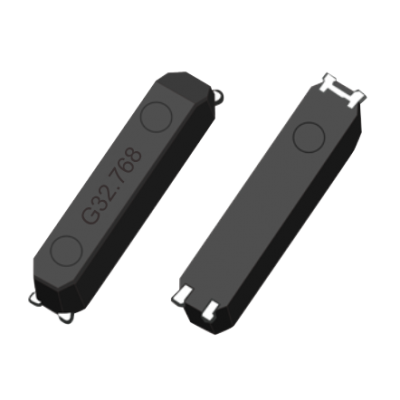
关于温度和电压变化引发的晶振电路不稳定问题(Temperature and Voltage Issues),晶诺威科技解释如下:
The circuit should be tested over the entire temperature and voltage range in which it is expected to operate. Tests are especially important at the highest temperature and lowest supply voltage, which lead to minimum loop gain and could result in a slow or no start-up. It’s also important to test at the coldest temperature and highest supply voltage, which lead to maximum loop gain and could overdrive and damage the crystal, force it to oscillate at an overtone or harmonic, or cause it to stop working.
晶振的振荡电路应在预期的整个温度和电压范围内进行测试。在最高温度和最低电源电压下的测试尤为重要,因为这会导致最小环路增益,并可能导致晶振起振缓慢或不起振。除此之外,请在最低温度和最高电源电压条件下进行测试,因为该测试会导致最大环路增益,可能使晶振因过驱而受损,迫使其在泛音或谐波模式下振荡,或停振。
If possible, testing under both low- and high-humidity conditions is also recommended. To minimize undesirable temperature effects, use capacitors with a low temperature coefficient。Verify that all components are specified to work for the entire temperature and voltage range, especially the crystal.
如果可能的话,建议进行湿度(最低湿度~最高湿度之间)测试。为了最大限度地减少温度变化带来的不良效应,请使用低温度系数的电容元件。请验证并确保所有组件都符合温度和电压要求,尤其是晶振。
拓展阅读:如何有效提升晶振的抗干扰能力可以采取以下措施
在实际应用中,晶振作为频率控制元件,其稳定性和准确性至关重要。然而,晶振容易受到电磁干扰、射频干扰以及电源噪声等外部因素的影响,导致其频率稳定性下降。为了确保晶振的频率稳定性,必须采取有效的抗干扰措施。
晶振受到的干扰主要包括电磁干扰、射频干扰和电源噪声。电磁干扰是由外部电磁场或其他设备产生的辐射或噪声引起的,可能导致晶振工作异常或信号失真。射频干扰主要由无线通信设备、雷达、Wi-Fi路由器、手机等产生的射频信号造成,通过辐射或耦合进入晶振电路,影响其正常的振荡和频率输出。电源噪声是由电源的不稳定性或其他设备的干扰产生的,通过电源线路传导到晶振电路中,影响晶振稳定的频率输出。
为了提升晶振的抗干扰能力,可以采取以下措施:
1、选择合适的晶振型号:低相位噪声、低电磁干扰和低射频干扰晶振是提升抗干扰能力的关键。这些晶振型号具有较低的相位噪声和电磁干扰,能够更好地抵抗外部干扰。
2、使用晶体滤波器:晶体滤波器能够有效抑制高频噪声,降低干扰对晶振的影响。通过选择合适的滤波器,可以滤除干扰信号,提高晶振的频率稳定性。
3、采用金属屏蔽外壳:金属屏蔽外壳可以防止电磁辐射进入晶振电路,提高抗干扰性能。通过将晶振封装在金属外壳中,可以减少外部电磁干扰对晶振的影响。
4、优化电路设计:合理的PCB布局能够有效降低干扰耦合,减少外部信号对晶振的影响。尽量减少长引线和高频噪声路径,避免信号反射和干扰。通过优化电路设计,可以降低干扰对晶振的影响,提高其频率稳定性。
5、去耦与稳压:在电源输入端加入去耦电容,以减少电源波动和噪声干扰。同时使用稳压电路,确保晶振获得稳定的电源供给,避免电压波动影响其频率稳定性。通过去耦和稳压措施,可以降低电源噪声对晶振的影响,提高其频率稳定性。
6、应用软件抗干扰技术:通过数字滤波算法进一步降低噪声干扰的影响。对采集到的信号进行数字处理,软件滤波器可以消除外部干扰,提高信号的纯净度和稳定性。通过应用软件抗干扰技术,可以进一步降低干扰对晶振的影响,提高其频率稳定性。
综上所述,晶振的抗干扰技术对于确保其频率稳定性至关重要。通过选择合适的晶振型号、使用晶体滤波器、采用金属屏蔽外壳、优化电路设计、去耦与稳压以及应用软件抗干扰技术,可以有效地抵抗电磁干扰、射频干扰和电源噪声的影响,提高晶振的频率稳定性。







